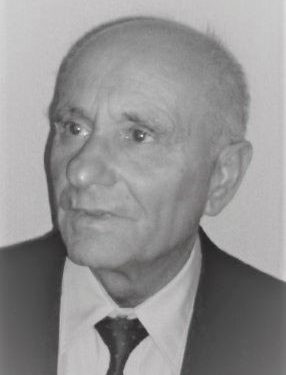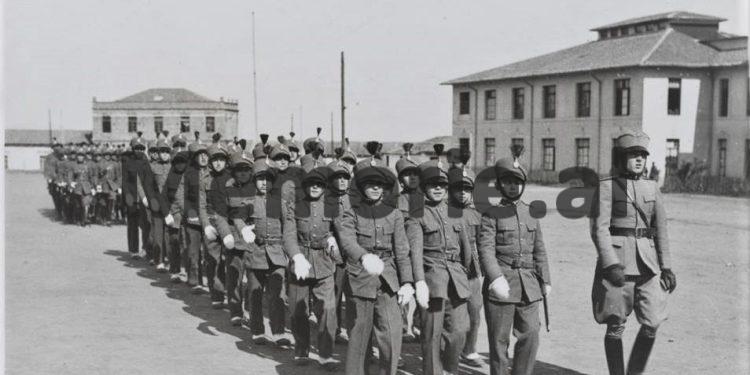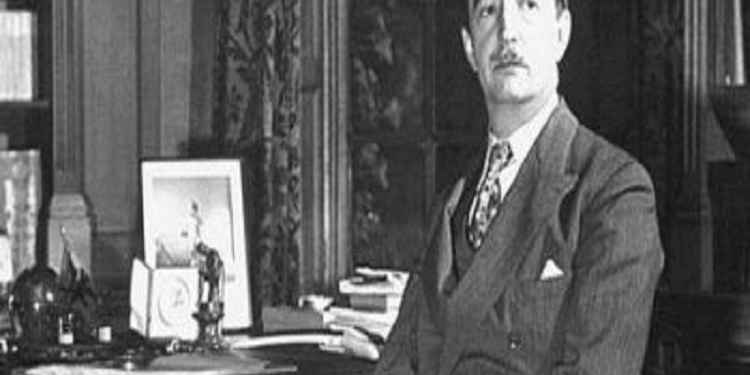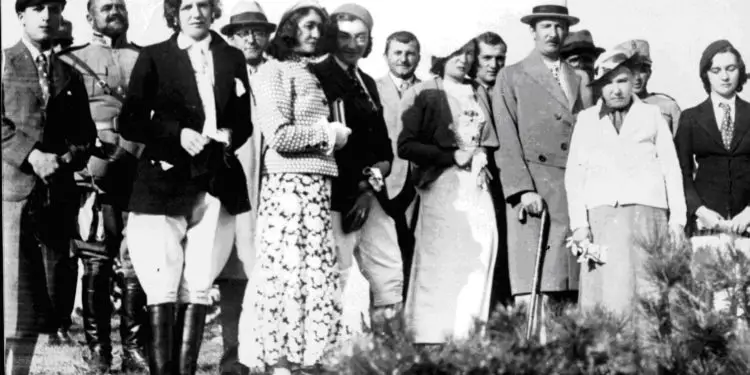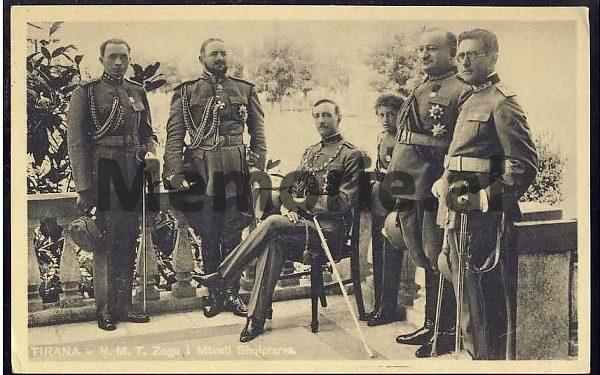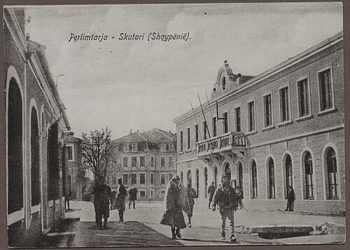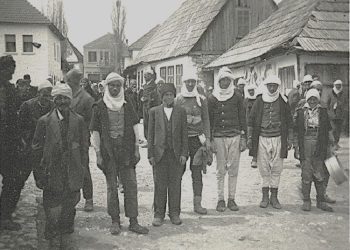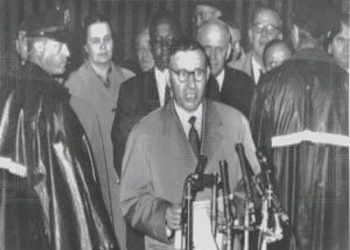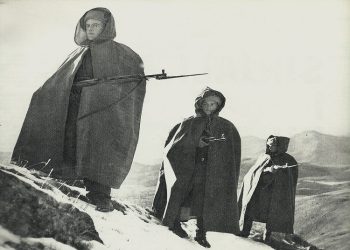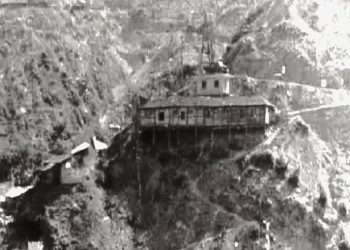By Sven Aurén
Translated by Adil N. Bicaku
Part seven
ORIENTI EUROPE
Land of Albania! Let me bend my eyes
On thee, thou rugged nurse of savage men.
Lord Byron.
In the book “Orient of Europe”, the author of the work is the Swede Sven Aurén. They are impressions of traveling from Albania from the ‘30s. His direct experiences without any retouching.
In a word, the translation of the book will bring to the Albanian reader, the original value of knowing that story that we have not known and we continue to know it, and now distorted by the interests of the moment.
Now a little about what these lines address to you: My name is Adil Bicaku. I have worked and lived for over 50 years in Sweden, without detaching for a moment, the thought and feeling from our Albania.
I am now retired and living with my wife and children, here in Stockholm. Having been for a long time, from the evolution of the Albanian language, which naturally happened during these decades, I am aware of the difficulties, not small, that I will face, to give the Albanian reader, the experiences of the original.
Therefore, I would be very grateful if we could find a practical way of cooperation together, to translate this book with many different values.
Morally, I would feel very relieved, paying off part of the debt that all of us Albanians owe to our Albania, especially in these times that continue to be so turbulent.
With much respect
Adil Biçaku
Continued from the previous issue
The head of government they ousted is a very interesting person: Bishop Fan Noli, an Albanian-American politician with sympathy for the Soviet Union and an ardent admirer of that party, which describes itself as “democratic.” Fan Noli, from a small Albanian village in Thrace, was educated in America and graduated from Harvard University. In addition to his political activity, he is strongly interested in literature and responds to Albanian translations by Shakespeare, Ibsen and Blasko Ibanjez. In Boston he founded an independent Albanian Orthodox Church and returned after the declaration of independence to his homeland, where his higher education is much needed.
He is Albania’s representative in Geneva and covers a number of ministerial posts. It seems that in America he was heavily influenced by communist ideas. The first measure he takes as head of government is to enter into direct relations with the Soviet Union. In Moscow, they have not abandoned their dreams for the Adriatic at all and the Soviet authorities eagerly accept Fan Noli’s invitation to send a commission to Tirana. But this flirtation with the Soviet Union is not lucky. Ahmet Zogu’s admirers regain ground, and Ahmet Zogu, after Fan Noli took power, withdrew to Belgrade, mobilized a small army with Yugoslav help, defeated government troops, and on Christmas night 1924 marched inside Tirana.
Fan Noli and other members of the government flee to Italy. Fan Noli then continues on his way to America and there he acts uninterruptedly, as King Zog’s fiercest opponent. The talented bishop has many sympathizers within the Albanian emigration colony in the US and is said to be linked to opposition districts within Albania. Now he, with the help of his followers, publishes a newspaper, where the Tirana regime is severely criticized in all forms it can think of.
The first measure of Fan Noli’s government was the convening of a Soviet Russian commission. The first act of Ahmet Zogu, after being reinstated in his duty, to bring this commission out of the gate. But times have changed since 1924. On my last day, from my stay in Tirana, the new Soviet ambassador to the Royal residence was received in full audience. He was staying in the same hotel as I was; small, fat, gentleman with intelligent appearance and in tailcoat, unmistakable. The presenter for the foreign representatives, in a beautiful uniform and feathered hats, took it in solemn form with a large, open car. The troops marched and the officers honored the weapons, with great pride, when the King welcomed the representative to the field of his new activity.
Christmas night 1924, it seems that in the path of Ahmet Zogu’s life, has walked in a more stable groove. On January 22, 1925, the National Assembly proclaimed Albania a Republic and Ahmet Zogu, President of the Republic for seven years. But now, after three years, the presidency is over. A new national Constituent Assembly convened and proclaimed Albania, Inherited Kingdom, in August 1928. The first King of Albania is Ahmet Zogu. On September 1, 1928, he was sworn in as Zog I, King of the Albanians, and an oath in the newly established constitution.
He paid attention to this: The King of the Albanians. Not long ago, the Yugoslav government sent a letter to Tirana, addressed to: “M.T. Zogu I, King of Albania”. The letter was returned again, with the very meaningful inscription: letter recipient unknown. Zogu is not the King of Albania but of the Albanians. This is an essential difference. Approximately as many Albanians live in Yugoslavia and Greece as in Albania. The Albanian government has never accepted leaving these territories outside its territory. Zogu is the King of all Albanians. MP Fejzi Alizoti, was greeted nearby, with a storm of applause in the
Parliament of Tirana, when he explained that it should be considered an insult to His Majesty, to accept a letter entitled “King of Albania”.
Sadrazemi and friendly moon
The capital of King Zog is eccentric, a society full of contrasts, the most bizarre between east and west, an ugly city, if you like at home, low, simple but also a beautiful city, with unexpected memories of past times and surroundings, to amaze and with a completely different atmosphere, from other European capitals. I have heard on many occasions that Tirana is characterized as a poor Balkan village, but such a judgment, unfortunately reveals only a lack of feelings, which actually constitutes the allure of the city. It is not the houses and streets that give the city those characteristics.
If so, the feature will be real and the beautiful and poetic name of the city, a painful irony. It is the people, the inhabitants of Tirana, who give Tirana all that rare magical power, simplicity, often credulous, but always equally aristocratic and always charming. They are all the same, from the polisher to his ministerial excellence. It is, of course true, that as a rule always in the first place, are the people, and then comes their dead environment, which gives the community its special appearance. But I know many cities and only cities in the Balkans, where houses and people, both are not attractive, with a frightening harmony with each other, that makes you imagine that the environment has formed people and not, on the contrary.
In the bad houses of Tirana, behind the broken railings of the windows and the unclean windows, yes, even in those small and large hotels, live good and loving people. Either they are cultured, humane and wear clean, correct clothes, or even wrapped in rags, dirty and clearly unknowingly. But this is a specific difference, in the way and behavior of the Albanian ragman and the Italian or French. It is an unforgettable sight, to see Albanian wearing torn clothes, walking on a street in Tirana.
He keeps his body straight and his head up while walking, which proves that he has warrior blood and a proud background. He has a dignified manner and natural humanity, which even in Sweden, at its best, can be a rare occurrence. At this point, he differs from the other brothers in the Balkans, as it seems that for a long time he, more than any other Balkan resident, has been isolated from it, which we call modern times and modern culture. So when I say that Tirana has an atmosphere that differs from other capitals, it is not the Alps that surround it, the women covered, the looseness of clothing, or the glass or the dervishes, that creates this atmosphere. He discovers this, in peaceful and intimate conversations with the inhabitants, or in conversations that take place around hot cups of coffee, in a private house, behind the counter of the shop or in some primitive restaurant.
***
In that beautiful car and with the pauper driver, who politely like a guide even without being understood, my lady and I arrived, from Durrës to Tirana, where we immediately tried to check the possibilities for a city hotel. It seemed that Tirana has a number of ordinary hotels, with a Balkan character, ie, unpopular, dirty equipment, where the owner does not find it at all natural, to give the whole room, only to two people, but only one, which meets modern European conditions: “Continental”, near the Royal residence. The owner of the hotel is Italian, which has resulted in it becoming a natural meeting place for the Italian colony.
The colony has all the reasons to feel satisfied. The service is Italian, the Italian cuisine and the owner, to the extent of Italian, those two minutes after our arrival, visited my lady with a large bouquet of roses. This is a nice and tidy hotel, with spa, hot and cold water and a small garden, surrounded by a wall covered with pieces of sharp glass. In addition, it is an original hotel. The man in the embroidered uniform, who is at the goalkeeper’s counter and speaks fluent Albanian, French and Italian, looks like he is 12 years old, but he says he is 14. We did not believe this fact at all, unverifiable age. Sometimes when I suddenly enter the hotel door and the goalkeeper is forced to leave the interesting adventure of Conte Monte Cristo, translated into Albanian, I felt almost driven to lie down on the floor and play with him, to change the look of cloudy of the child’s face, to melt a little.
So the Hotel “Continental”, was our residence during the days in Tirana. We had a great time, but from time to time we started to get bored, with split eating, spaghetti and go to eat in other restaurants. Besides her, I wanted to know how much spaghetti an Italian eats, from cradle to grave. How many laps around the globe will you be able to wrap with fantastic spaghetti strands. But soon, of course, popular statisticians will answer this important question as well.
Finally there is something else to note about this hotel. I found out later that this hotel owner was the only Italian with an independent firm in Tirana.
There are no shops, cinemas, Italian industry at all. For all its fame and consequences, among other things, how unfortunate the new Monarchy’s dependence on Italy has been, the government has been able to protect its citizens’ enterprises from Italian competition. That the hotel “Continental” is an Italian hotel depends quite simply, on the circumstances that no Albanian businessman, has undertaken to build a real hotel, first class. Better a poor horse than no horse at all. But if an Albanian luxury hotel were to see the day, it would be quite difficult for the Italian competitor to hold the concession.
Tirana has 31,000 inhabitants, according to statistics, and I have no right, in fact, to question this fact, although I find it difficult to understand how it is possible to conduct an effective population census in a city where hardly any resident is registered. But the figure is interesting, to look at the relation of the population figure 1920: 14,000.
Without trying to think of another capital, Ankara, right there the population has grown in a strange way. Among other things, there are many similarities, the development between Tirana and Ankara. Of course, it may seem strange that Durrës was not chosen as the capital of the country, since the first declaration of Albanian independence, with a few small exceptions, it has been the seat of more or less successful governments. But on the one hand, it was the position of Durrës on the coast, very strategically endangered, just as Constantinople from the same point of view, was badly located on the shores of the Bosphorus, on the other hand they thought that the Adriatic coastal city, guarded too much of memories of Wiedit time.
Above Durrës, a mockery shone had fallen, in the eyes of the world. Tirana, located in the middle of the country and a chain of connections between the northern and southern parts, had greater preconditions to become the main seat of state administration. In addition, a very sad event took place in Durrës: malaria. The large swamps around the city were terrible outbreaks of malaria, which in recent years, finally managed to eradicate. During the summer nights, the city was filled with the ominous buzz of mosquitoes. Tirana also actually suffered from malaria, but on a much smaller scale. And so they decided for Tirana, which in this way awaits an unimaginable development.
Tirana also offers historical traditions, although not as strange as Durrës. The city was founded in 1600, by Sulejman Bargjin Pasha and about the origin, there is a beautiful legend, which in gene-rations is told from father to son, in the old tribes of Tirana and which is an excellent example of tradition rich oral of the country. I heard this myself, from the mayor of Tirana, Rexhep Jella, a nice gentleman and that the only despair in life, was that he was not born English, but that he understood this unfavorable circumstance, neutralizing it through the personalized creation of manner of behavior and appearance. This polite prefect had invited us for an excursion on the outskirts of the city and during a break, in a small idyllic guesthouse, where we were fed with brandy and goat cheese, he told with gestures, the history of the founding of Tirana:
By the end of the 1500s, in this area lived a bey, Sulejman Bargjini, who due to modest conditions, could not live exactly like the upper class, so he kept only one servant, a boy named Sadrazem. One day Sadrazemi goes to the lord and tells him that he had a very strange dream. It seemed to him that, like the full moon, he sat down from the sky and leaned on his shoulder, wanting to see him really closely, what his face was. Sulejman Bargjini, who is a learned man, clearly understood that Allah had great intentions with his hypocrite and advised him to travel around the world and seek fortune. Sadrazemi, took a sum of money from the benevolent gentleman, took the shepherd’s staff in his hand, and disappeared beyond the slopes of the mountains.
Years passed and one fine day, Suleiman was ordered to appear before the Grand Vizier. Such an order cannot be neglected and with a frozen heart, set off on a long journey to Constantinople. Who knows what might have happened so far away, in the dangerous Bosphorus? Maybe the silk thread was prepared. With trembling legs, after a while, he enters the Palace of the Grand Vizier and here he experiences the surprise of life: The Grand Vizier is none other than the former servant Sadrazemi, whom he once advised many years ago to come out and seek his own destiny. As in all beautiful fairy tales, generosity gets its reward. Sulejman Bargjini is named Pasha and receives the province, Sandzak Ohrid, as a reward. And on one of the hunting days, in this vast province, he comes to this beautiful valley, where the present Tirana lies and is fascinated by the beauty of the place, where he decides to build a city. Thus arose Tirana and Sulejman Pasha, found buried in the beautiful mosque in the middle of the city.
His descendants are still found today in the aristocracy of the families of Tirana, so the prefect ended and emptied the glass of brandy, with a taste of satisfaction, which gave me to understand that even within the prefect’s tribe, there must be some vague connection with this noble Pasha. Yes, it is clear, that that sudden rise of Sulejman Bargjint, was that he was a man with extremely rare feelings, of oriental beauty. A magnificent place for his city, than this green and bright alpine valley, he would hardly have found. As an impressing belt around the white houses and the slender minarets, lays a mountain range with snowy peaks, which at sunset, surprises you with the most beautiful conversion of colors.
In the north rises the mountain of Priska, 1,200 meters high, with the long slope towards Mount Dajti, rises in the north-west with a peak 1,400 meters high. To the south and west, are the longest mountain ranges, with a maximum height of 725 meters. Streams flow from the cliffs, shining down towards the great plain of Tirana. High mountains never bother you. They stand at a quite respectable distance and thus the city gets wide view and light. Tirana is the only one among the capitals of Europe for its position. If you walk a dinner without the noise of the city, you seem to understand Sadrazem’s strange dream. The big and colossal moon hangs on the cup of the sky and gives its hand, much needed to the poor lighting of the streets. It is so close that you are almost afraid that the tops of the minarets will not scratch that white gold. It seems quite natural, that he could have rested quietly, for a moment on Sadrazem’s shoulder. Memorie.al
The next issue follows







